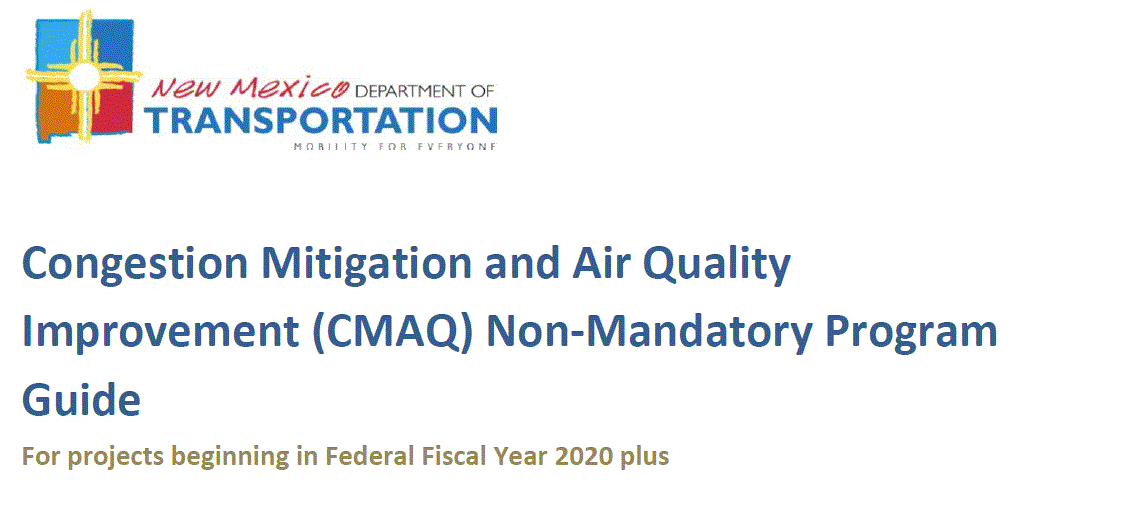CMAQ Non-Mandatory
The Congestion Mitigation and Air Quality Improvement (CMAQ) Non-Mandatory Program provides funding for projects and programs that improve air quality and reduce congestion.
Home › Programs › Transportation Improvement Program (TIP) › CMAQ Non-Mandatory
Last updated: 11/25/2019
FFY2020
Congestion Mitigation and Air Quality Improvement (CMAQ) Non-Mandatory
Awarded Projects
General Public Vanpool and Rideshare Services – NMDOT
- NMDOT Vanpool and Rideshare Services providing vanpool and rideshare services in any an all service areas located in Farmington, Las Cruces, Los Lunas and/or Santa Fe
- 2021: Total programmed: 648,000
- Lead Agency: Transit/Rail Division
- NCRTD – 5307 for the operation and capital funding related to NCRTD routes 255 and 260
- 2020-2023 and prior: Total programmed: $1,265,328
S100630 Arroyo Hondo Segment II
- For the construction of new bicycle and pedestrian facilities, 1.2 miles of the Arroyo Hondo trail
- 2021: Total Programmed $1,437,046
- $1,227,812/$209,234 Federal dollars/ Local funds
S100640 Arroyo Hondo Segment III
- For the construction of new bicycle and pedestrian facilities, 1.5 miles engineering for connection to Richards Ave.
- 2020 & 2022: Total Programmed $1,721,870
- $1,471,165/ $250,705 Federal dollars/ Local funds
FFY2020-21 Congestion Mitigation and Air Quality Improvement (CMAQ) Non-Mandatory – Call for Projects
Application Schedule Summary
- Wednesday, August 15th, 2018 – Release of Call for Projects/Applications
- Tuesday September 18, 2018 – Deadline to Submit Project Feasibility Form Electronically to the
Santa Fe MPO at [email protected] (5:00PM) - Monday October 15th, – Friday September 19, 2018 – Technical Review & Support of submitted
PFFs with MPO & NMDOT staff – Meeting will be set up and scheduled by the MPO. - Friday November 30th, 2018 – Deadline for Agencies to Submit CMAQ Non-Mandatory Project
Application Electronically to the Santa Fe MPO at [email protected] (5:00PM) - December 30, 2018 – Deadline for the Santa Fe MPO to Submit CMAQ Non-Mandatory Project Applications to the NMDOT CMAQ Non-Mandatory Coordinator (5:00PM)

For all details please download the following:
MPO Staff Contact
Leah yngve
MPO Transportation Planner
[email protected]
505-955-6614
Office Address
Monica Roybal Center
737 Agua Fria Street
Santa Fe, NM
View Map
Office Hours
8:00 am – 5:00 pm
Tuesday, Thursday, Friday
Virtually 8 -5 weekdays
(505) 955-666four
CONTACT US PRIVACY POLICY SUBSCRIBE
©2019 Santa Fe MPO | All Rights Reserved
Site by Tierra Plan
